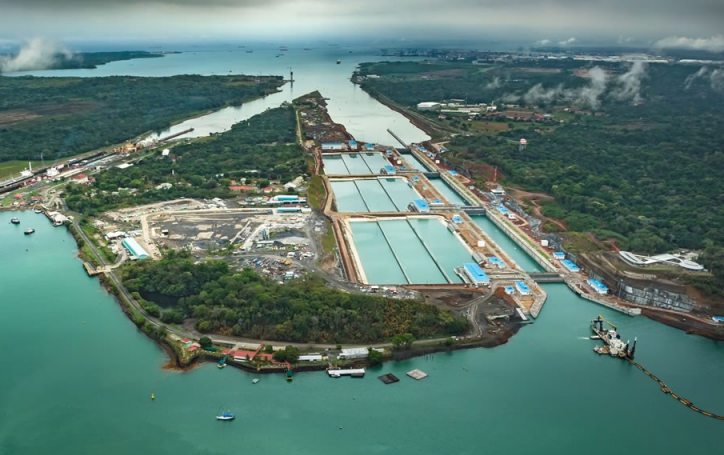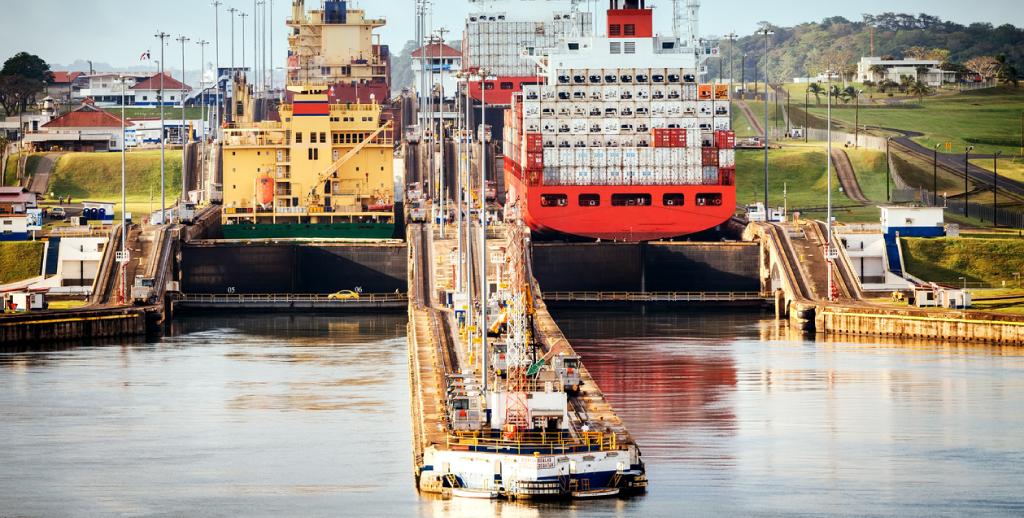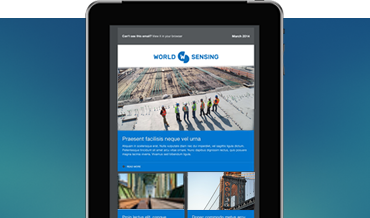Big Engineering – The Panama Canal Extension: Success or Failure?
The Panama Canal celebrated its 100-year anniversary in 2014, just as it was in the midst of its biggest expansion project yet, the Third Set of Locks Project – known in Spanish as the “ampliación del Canal de Panamá”. As a canal that served more than 144 maritime routes, connecting 160 countries and reaching around 1,700 ports, this famous strip of water was struggling to accommodate all of its cargo traffic – especially larger ships. The Panama Canal Expansion Project was therefore carried out to double the capacity of the existing canal by adding a new lane of traffic, or third lock, allowing for more and larger ships to pass through the canal.
Although the project started work in 2007 – and was supposed to open in August 2014 to coincide with the 100th year anniversary – due to some setbacks, the expanded canal began full commercial operation on 26 June 2016. For all intents and purposes, the expansion seems to have been a success: indeed, in March 2018, the Panama Canal Authority officially stated that 3,000 New Panamax ships had crossed the canal expansion during its first 20 months of operation. Despite this, months after its opening there still remain many doubts over the running capacity and safety of the canal. In this article, we will examine the success of the Panama Canal extension project in fulfilling its aims of expanding the canal and expanding Panama’s economy.
Expanding the canal’s capacities
The size of the lock chambers and the depth of the water in the Canal dictate the size of ships that can pass through. Before the expansion project, the canal could allow vessels carrying up to 5,000 TEUs (Twenty-foot Equivalent Units), often referred to as “Panamax”, to pass through; these ships were up to 106 feet wide, 965 feet long, and 39.5 feet of draft. However, with the development of even larger, “post-Panamax” ships, the canal became too small for the most modern cargo ships to pass through. With the completion of the expansion, post-Panamax vessels are now able to pass through the canal with up to 13,000 TEUs, and a total size of up to 160 feet wide, 1,200 feet long, and 50 feet deep. Aside from increasing ship capacities (from 5000 to about 13,000 TEUs) the new locks also created a third lane of traffic for these new vessels, meaning that the other two lanes now have a greater capacity for smaller vessels. This expansion is significant because it allows greater sizes and frequencies of vessels to pass through that are heading to the US East and Gulf Coast ports. Traditionally these vessels (usually coming from Asia) have had to pass through the Suez, as the Panama was too small, but now they can use the Panama too, massively increasing its competitivity.
Financial benefits
Increased canal capacity means a hugely increased amount of goods passing through the canal’s waters. The Panama Canal Authority (the Autoridad del Canal de Panama, or ACP) estimates that the combined effect of 12 to 14 larger Panamax vessels per day (an average of approximately 4,750 ships a year) combined with continued smaller vessel transits will double capacity, increasing Canal throughput from 300m tons to 600m tons PCUMS (Panama Canal Universal Measuring System).
This, in turn, translates into higher toll revenues and more economic benefits for Panama’s economy. The Panama Canal was already increasing its toll revenues before the expansion – they reached $1.994bn in FY2015, a 4.4% increase from FY2014.
But with the expansion of the canal, it can compete with the Suez, winning back what was lost to the Suez over the past 5-10 years and significantly increasing toll revenues. According to the ACP, the third set of locks will produce a 12 percent internal rate of return, bringing definite financial profits. Indeed, they estimate that tolls will increase at an annual average rate of 3.5 percent for 20 years.
On top of this, the canal expansion has brought employment opportunities with the creation of more than 30,000 new jobs. Officials say that this is only the beginning, suggesting that the most significant employment impacts will be medium- to long-term. This is because they will stem from the economic growth stimulated by the extra revenues generated by the expanded canal, and the rise in economic activity due to increased canal cargo and vessel transits.
Despite these benefits, however, there are still many concerns over the design and viability of the canal in the long-term, as we shall see below.

Aerial view showing the new Panama Canal expansion. Photo courtesy of Panama Canal Authority
Environmental Concerns
There are a number of environmental concerns around the Panama Canal extension project. Notably, there are worries over whether there will be enough water in the canal for such large ships. In other words, if the water is not deep enough, the giant container ships for which the expansion was specifically designed will not be able to transport their large loads of shipping containers through the waterway. While annual rainfalls are generally high in Panama, they are not guaranteed, especially in the era of climate change and increasingly erratic weather patterns. In 2016, for example, the rainy season came late, probably because of El Niño. Whatever the reason, however, the water shortage meant that the Panama Canal Authority was forced to implement precautionary measures, introducing weight limits for ships coming through the existing locks at least 3 times during that year (2016).
It is true that the new locks have a unique, oft-discussed, water-saving design with “water-saving basins”. These three basins, which operate via gravity, fill and empty into each of the three new locks, reusing up to 60 percent of the water that passes through them.
Even with these super-sustainable recycling basins, the canal is still relying on its main source – the artificial Lake Gatun – to provide twice as much water as before, now that the new locks are in use.
Lake Gatun is also the source of around half the country’s fresh drinking water. Eric Jackson, editor of the online Panama News, argues that the canal expansion is potentially contaminating an important source of human drinking water, pointing to studies by Delft Hydraulics, WPSI Inc., and DHI to suggest that the proposed water-saving basins will allow more salt water into Gatun Lake. In response, the ACP says that this problem is eliminated by simply “flushing” the new locks with fresh water from Gatun Lake, but this seems to defeat the point of the water-saving basins. It is difficult to know the extent of the risk of contamination here; while Jackson has some evidence to back up his claim (the above reports), one of the leading environmental organizations in Panama, the National Association for Nature Conservation (ANCON), conversely argues against him. They say that the salinization level of the waters of Gatun Lake will be very low and consequently not a problem. However, more and bigger ships translate into a greater amount of diesel and petroleum being transported through the waterway, posing a heightened pollution risk in the event of a casualty.
Increased risks?
Aside from environmental and viability concerns, there are also further risks that come with the expansion of the canal. There are strong concerns over the chances of accidents happening in the expanded Panama Canal because of its narrowness. Some industry bodies have suggested that at 427 m long and only 55 m wide, the new locks are actually too small for the New-Panamax ships to safely pass through. For context, the largest vessels can measure up to 366 m long and 49 m wide, leaving a distance of just 6 m across the width of the canal free. The margin of error for navigating the new locks is therefore minimal.
In addition, a joint study by the International Transport Workers’ Federation (ITF) and Brazil’s Fundação Homem de Mar (FHM) found that under windy conditions the manoeuvrability of vessels would be compromised, making accidents very likely due to the lock’s narrow dimensions. Aside from weather conditions, the risk of collisions or groundings is also exacerbated both by increasing congestion on the canals as more and more ships begin to pass through, and the existence of a narrow passage called the “Corte Culebra” at one part of the canal, which has many tight turns and sheer rock walls. To top this all off, the new locks use tugs instead of the traditional “mules”. These tugs will be in the lock chamber with the vessel that is locking through, meaning that, in addition to the tightness of the canal, the tubs contribute to additional potential for increased contact with the lock walls.
Water seepage is also a concern. Water pouring through the cement walls of the new locks was one of many problems that delayed the opening of the Panama Canal expansion.
These faulty lock walls were not actually torn down and replaced but instead just reinforced. There are understandably therefore many concerns that the finished expansion is based on a faulty product. This is particularly worrying when one considers that the possibility of a large ship hitting the locks is not entirely unlikely.
The bigger ships that now pass through the canal pose greater risks simply because of their size. The sheer amount of cargo carried by them means that if a serious casualty does occur, it has the potential to lead to a sizable loss of both goods and lives, and cause significant disruption.


